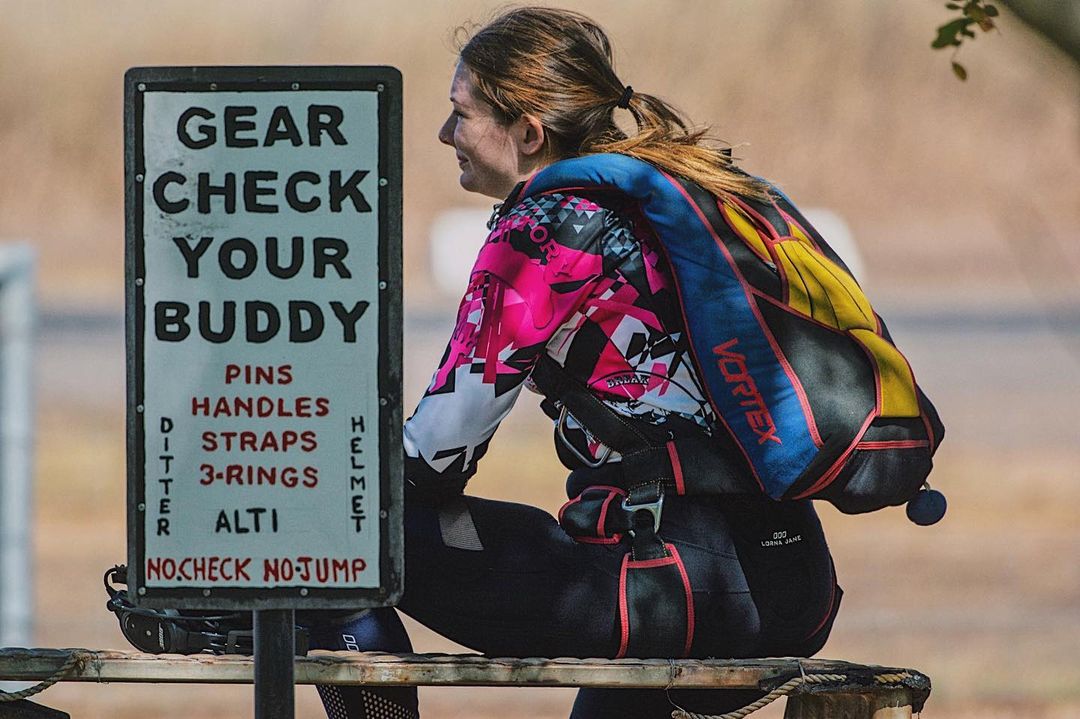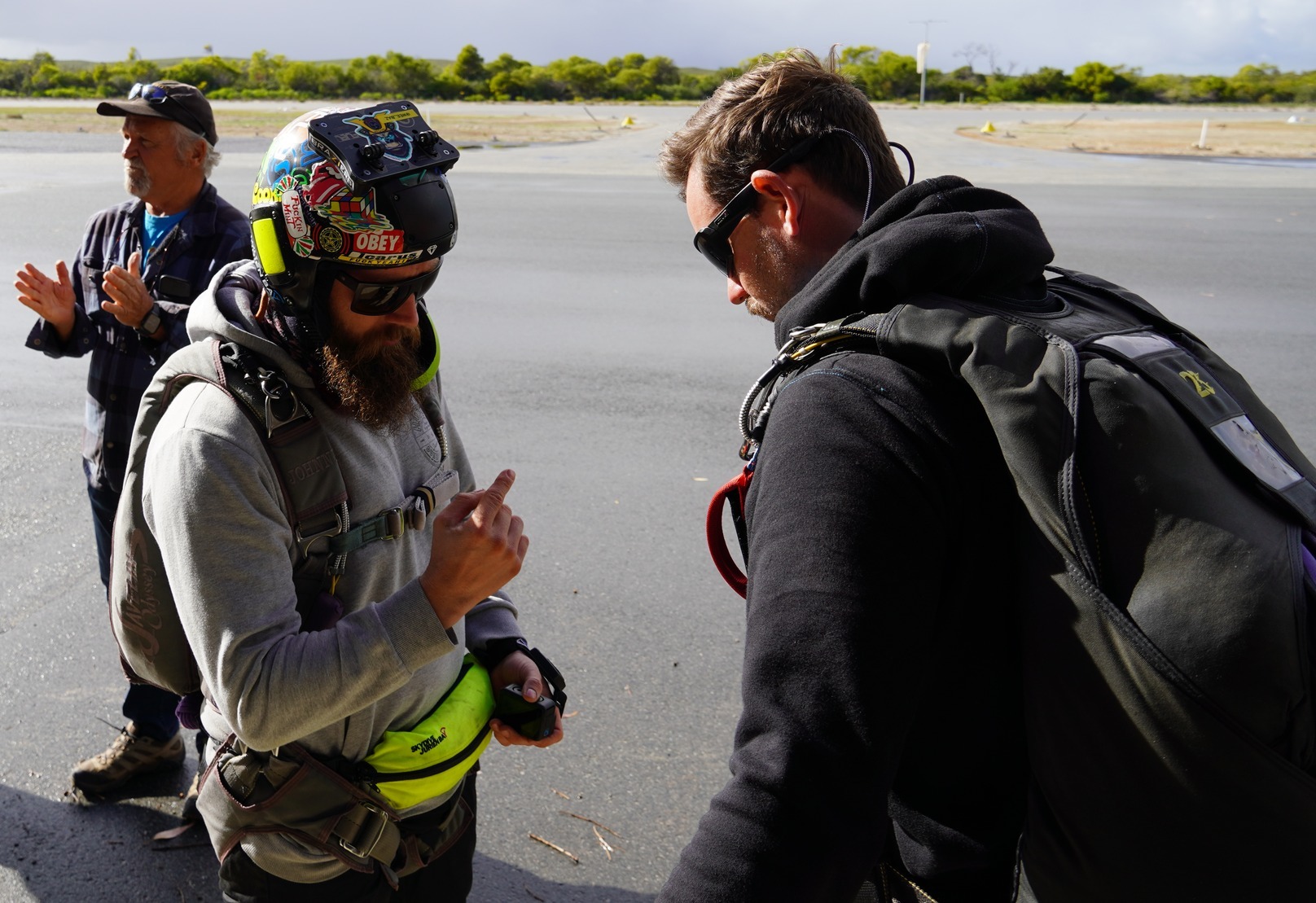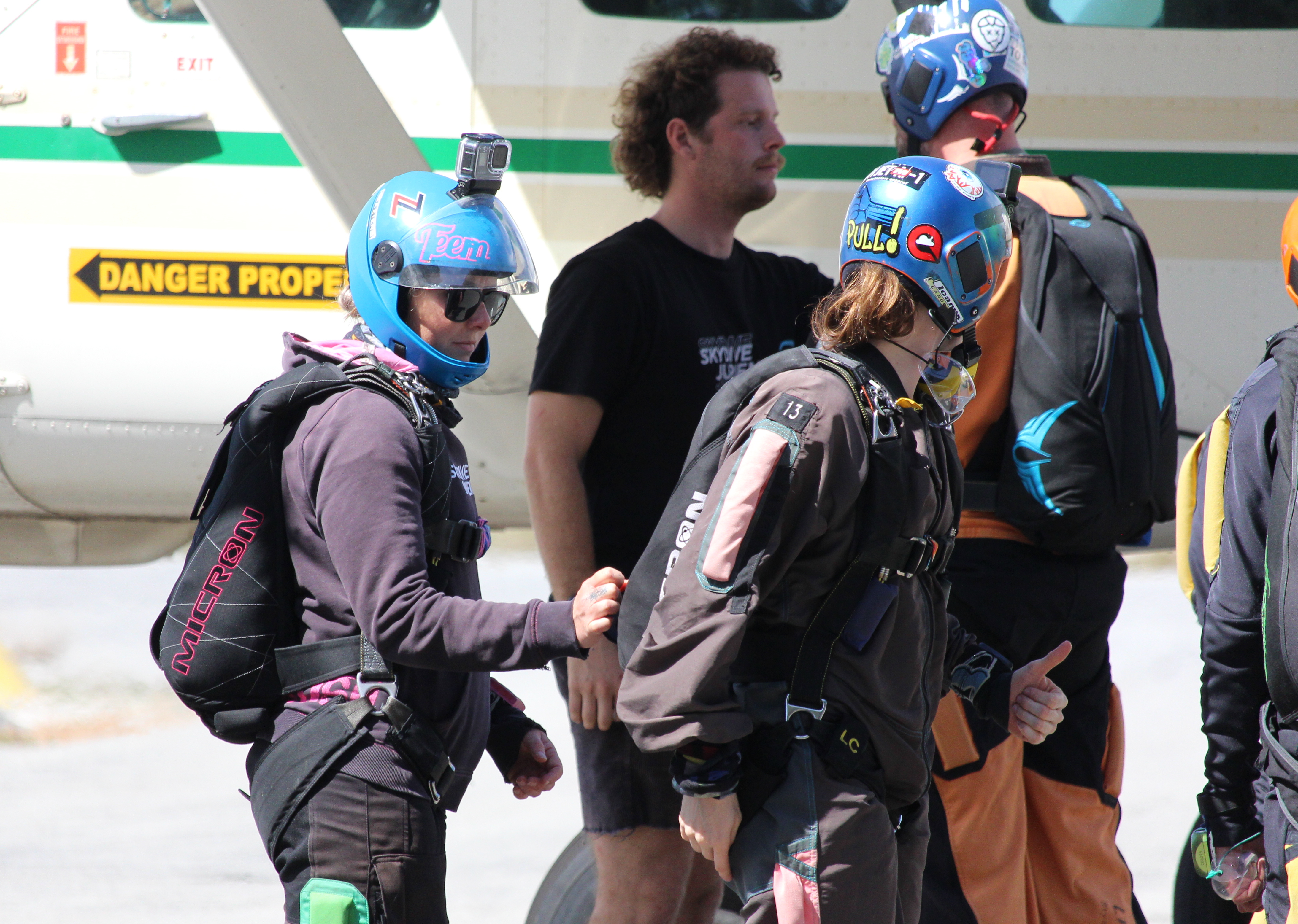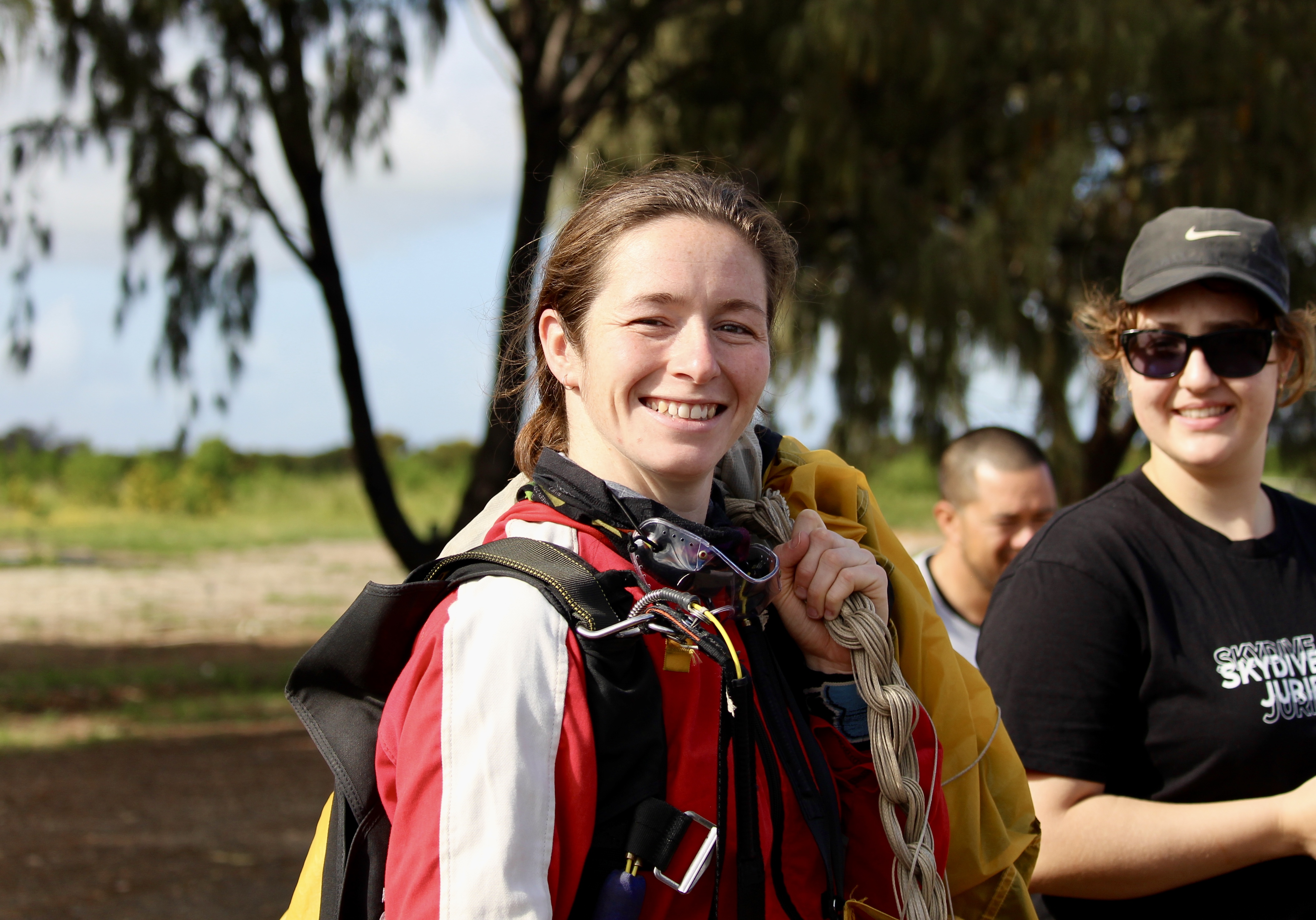Like many aspects of skydiving, if you don't want things to be missed, make sure you have a system. And stick to it.
Why Talk About Gear Checks?

I had been thinking about writing an article on gear checks for a little while up til now. It was just the other day when a student asked me for a gear check, without realising their chest strap was totally undone, that convinced me this is a topic definitely worth talking about.
The student had done up their leg straps, had their altimeter and helmet on and was otherwise ready to go, apart from the blatantly obvious (or perhaps not) lack of a chest strap. It was tucked away under the main lift webbing of the container, so wasn't even routed at all.
This obviously raised a few flags.
First, the gearing up system that is taught of "chest strap first" had not been followed.
Second, the student either did not take on the responsibility to check themselves, or they did not fully understand how to check their gear, before asking for a gear check.
This is where number three, a gear check from someone else, commonly known as a "buddy check", saves the day.
This student is obviously not the first person to make a mistake like this, and certainly won't be the last.
Some other examples of mistakes I've personally seen, both before and after boarding the plane, are: misrouted chest straps, loose leg straps, RSLs connected incorrectly, risers packed under riser flaps, pilot chutes and bridles hanging out, open reserve flaps, and main closing pins barely pushed in past the closing loop - to name a few.
So how do we resolve this?
Transitional Periods for New Jumpers
There are numerous transitional periods for new jumpers, from finishing their AFF course, to getting their Certificate A, learning to pack, jumping their own pack jobs, starting B-rels, jumping with other novices, getting their Certificate B and so on.
Mentoring and helping a new jumper through these periods can be the difference between a safe and proactive skydiver, and an unaware and reactive skydiver, or even the Drop Zone "liability" or "wild card" - titles which nobody wants to have.
As we all know, there is a never-ending amount of information to be drip fed to new jumpers, and experienced jumpers alike.
Understanding the gear we are putting on our backs is a necessary fundamental.
Buddy Checks
We all know gear checks must be done before we put our rigs on. Students then require multiple gear checks from instructors. Licensed skydivers must get a buddy check from any other licensed skydiver before emplaning, as a requirement in the Operational Regulations.
If you don't get a buddy check, you are breaking an Op Reg.
But when a new jumper goes from a student licence to a Certificate A, they may have never actually checked somebody else's gear before. Instilling the confidence in new jumpers to question something if it is wrong, and further more actually speak up about it, is extremely important.

We all know the "blind nod" of acknowledgement that new jumpers do when the wind sheet is passed down the plane on first load. The "look at the sheet with a quizzical look, nod a few times, then say 'yep' or give a thumbs up as they pass the sheet back" routine. We all probably did it at some point at the start of our skydiving careers, hence recognising it so easily. You might even still be doing that. If so, ask someone what it all means next time.
This "blind nod" is inadequate in any circumstance; especially when doing a buddy check. If you are checking a 3-Ring configuration, you are not just glancing over it, you are checking it is assembled correctly. If you are checking a chest strap, you are checking it is routed correctly. And if you are checking a pilot chute, you are checking it is tucked away and not hanging out at all. You get the gist.
So let's talk about systems.
Have A System and Stick To It
First and foremost, you are responsible for the gear you are putting on your back. So make sure you do a sufficient gear check before you put it on.
Have your system - whether you start with the AAD and work down from there, or whether you have a different system - do what works and stick to it. Do not get distracted half-way through. If someone does interrupt you and you lose your chain of thought, start again from the beginning.
Understand why you are checking what you are checking: why the RSL needs to be connected to its own independent ring, why the 3-Rings are assembled the way they are, and why your main closing loop should be tight on the main closing pin (not loose to allow for an easy pack job).
Then once you have geared up, give yourself a once over before asking someone else for a buddy check.
At best, this will save you a bit of embarrassment if you haven't done something properly. At worst, this personal once over could save your life. Never rely on someone else to spot a mistake; take responsibility for yourself and do that personal check. Once that is done, go ahead and ask for the buddy check.

And when someone asks you for a buddy check, make sure you do it properly. I personally touch things as I go and say what I am checking out loud. This confirms with myself and with the other person, that I am actually checking the gear properly, rather than just glancing over it and doing the inadequate "blind nod". If a pilot chute or excess bridal is hanging out of the BOC, I don't just look at it, I explain that it is hanging out and tuck it back in. When I look at a chest strap, I look closely at the routing of it and physically pull on it, to ensure it is routed correctly. And if someone interrupts me, I politely ignore them until the gear check is complete.
Before I board the plane with a student, I say "helmet, goggles, alti, rig, radio" out loud and point at each thing in turn. I then do exactly the same with my own gear. It might sound a bit silly or particular, but it decreases the chances of something being missed.
Solutions, Solutions, Solutions
Obviously we can't spoon feed every single new skydiver, and we actually don't want to do this. We want to foster a proactive and safe approach to skydiving, enabling progression and in turn, continuous development and enjoyment for jumpers. And we want to encourage new jumpers to be proactive in seeking information, asking questions, and expanding their understanding of all there is to know.
Recently, a new "gear check sign off" test has been implemented at Drop Zone level at my local DZ. All Certificate A applicants here now need to complete this additional practical "gear checks" test in order to be signed off to do gear checks for other people, before their application will be approved. This involves instructors putting on some gear with intentional mistakes and seeing if the applicant spots them all during a series of buddy checks. It is a good test to identify how much of an understanding the student actually has about what they are checking and why, and gives an opportunity for further training if required. It is also proving to be very effective, with the amount of gear mistakes spotted by instructors reducing dramatically.
So, if you are noticing complacency or common problems at your Drop Zone, speak up. Talk to your DZSO and influence a positive change.
Understand the Gear. Have a System. Stick to It.
About the Author

Lucy Clacher is a Tandem/AFF Instructor and Course Trainer. Originally from the UK, Lucy learnt to skydive whilst travelling Australia in 2019, and has been working in the industry ever since.
[Photo Sources: Leah Claire Smith, Kim Brooks, Jasper Chan]